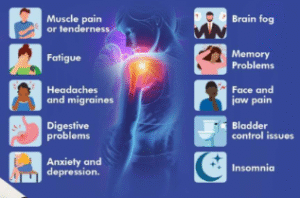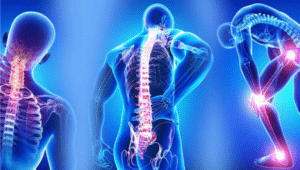A Deep Dive into Stage 2 Fibromyalgia and Its Life-Altering Impact
Stage 2 Fibromyalgia: The Turning Point of Chronic Pain and Persistent Symptoms
Fibromyalgia is a long-term condition that affects the muscles, soft tissues, and nervous system, leading to widespread pain and other life-disrupting symptoms. It often progresses in stages, with Stage 2 fibromyalgia representing a pivotal phase where mild discomfort evolves into more persistent and recognizable patterns. Unlike the initial stage, where symptoms are vague and easy to dismiss, Stage 2 brings a level of consistency and intensity that begins to interfere with daily functioning. Understanding what happens in this stage can be crucial for managing symptoms effectively and preventing further deterioration.
What Defines Stage 2 Fibromyalgia
Stage 2 fibromyalgia is characterized by a notable shift in symptom intensity and frequency. It is the stage where many individuals begin to realize that their symptoms are not fleeting or caused by stress or overexertion alone. People in this stage often start seeking medical evaluations due to the chronic nature of their pain and fatigue.
This stage is when fibromyalgia becomes more intrusive. The symptoms not only linger but also expand in scope and consistency, affecting various systems in the body. The discomfort begins to transition from something you can ignore to something you must adapt your life around.
Common Symptoms Experienced in Stage 2
By the time someone reaches Stage 2 fibromyalgia, their symptoms become more clearly defined and are typically experienced more days than not. These symptoms include:
- Widespread Pain: No longer confined to one area, the pain begins to radiate across multiple parts of the body. It may feel deep, aching, burning, or throbbing.
- Increased Fatigue: Tiredness becomes a daily obstacle rather than an occasional annoyance. Even with long hours of sleep, exhaustion can be overwhelming.
- Fibro Fog: Mental clarity starts to fade. People report issues with short-term memory, concentration, and word recall, which can affect work and social interactions.
- Tender Points: Certain parts of the body become extremely sensitive to touch, often located around joints but not within them.
- Sleep Disturbances: Restorative sleep becomes elusive, with many waking up feeling unrefreshed and experiencing frequent nighttime awakenings.
- Heightened Sensitivity: Increased reactions to noise, light, temperature, and pressure are often noted.
The symptoms in this stage begin to form a more recognizable pattern, making diagnosis more likely, although it can still take time for healthcare providers to rule out other conditions.
Emotional and Social Impact
Stage 2 fibromyalgia not only affects the body but also the mind and interpersonal relationships. Living with persistent pain and fatigue often leads to emotional struggles, including:
- Irritability and mood swings
- Feelings of frustration or helplessness
- Anxiety about health and the future
- Mild to moderate depression
Socially, individuals may begin to withdraw or reduce their engagement in previously enjoyable activities. Family and friends may struggle to understand the unpredictable nature of symptoms, leading to misunderstandings or feelings of isolation.
Diagnosis in Stage 2
This stage is typically when a diagnosis is made. Medical professionals may use a combination of criteria to assess for fibromyalgia, including:
- A widespread pain index (WPI)
- Symptom severity scale (SSS)
- Duration of symptoms longer than three months
- Absence of another disorder that would otherwise explain the pain
Although no lab test confirms fibromyalgia, healthcare providers may order blood work and imaging to eliminate other conditions like rheumatoid arthritis or lupus.
Treatment and Management Strategies
Stage 2 fibromyalgia calls for a more structured and comprehensive approach to symptom management. While there is no cure, combining multiple therapies can significantly improve quality of life. Treatment strategies may include:
- Medications: Doctors may prescribe medications like low-dose antidepressants, anticonvulsants, or muscle relaxants to alleviate pain and improve sleep.
- Cognitive Behavioral Therapy (CBT): This form of therapy helps patients manage stress, reframe negative thinking patterns, and develop coping strategies.
- Physical Therapy: Guided exercise can help maintain mobility and reduce stiffness.
- Lifestyle Modifications: Prioritizing good sleep hygiene, stress reduction techniques, and a balanced anti-inflammatory diet can ease symptoms.
- Support Networks: Joining support groups, whether in person or online, helps individuals share experiences and learn practical tips for daily living.
The goal at this stage is not just to relieve symptoms but to regain control over life and build routines that reduce flare-ups.
Flare-Ups in Stage 2
Flare-ups, or periods of increased symptom severity, become more frequent in Stage 2. These may be triggered by:
- Physical overexertion
- Emotional stress
- Poor sleep
- Weather changes
- Dietary triggers
Recognizing these triggers early can help individuals plan ahead and implement strategies to reduce the intensity or duration of flare-ups.
Prognosis and Next Steps
While Stage 2 fibromyalgia marks a challenging shift, it is also a critical time for intervention. The way symptoms are managed during this phase can influence how the condition progresses. Proactive self-care, adherence to treatment plans, and open communication with healthcare providers can stabilize symptoms and potentially prevent further worsening.
Conclusion
Stage 2 fibromyalgia is the stage where the condition begins to assert itself into everyday life. Symptoms intensify and persist, prompting the need for formal diagnosis and structured care. Recognizing this stage early allows for timely interventions that can greatly improve long-term outcomes. Though living with Stage 2 fibromyalgia presents real challenges, a combination of medical treatment, lifestyle adaptations, and emotional support can empower individuals to lead fulfilling lives despite the diagnosis.



